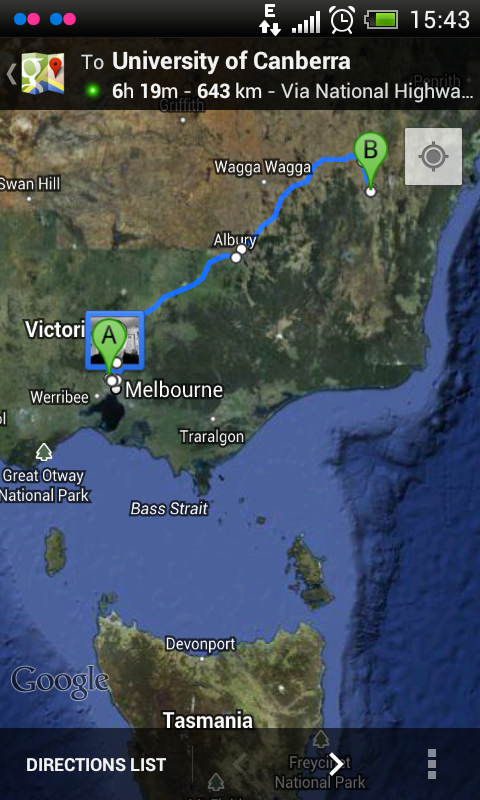
As part of my VET Development Centre Specialist Scholarship I attended ARcamp 2.0 at the Inspire Centre at the University of Canberra from Monday 20 May to Tuesday 21 May 2013. This blog post provides an overview of the presentations and activities that I participated in throughout the first day of camp.
Welcome to ARcamp
Danny Munnerley from ARstudio welcomed us all to camp. He spoke about ARstudio as a two-year practical and research project that was nearing completion. He also spoke about the eventual release of a resource that compiles their research findings and that this year would be the last camp.

The welcome also featured an update on the current state of play in AR by Rob Manson from Mob Labs. Rob spoke about AR technology, simultaneous localisation and mapping (SLAM), his company buildAR, the challenge of developing standards for AR, the probable slow demise of proprietary browsers and the eventual rise of AR as common web browser experience built on Web sockets, Web Real-Time Communication (WebRTC) and the Web Graphics Library (WebGL).
There are more photos of Rob Manson’s presentation from Day 1 of ARcamp in my ARcamp 2.0 set on Flickr.

35° 17 South
Tony Oakden and Dean Walshe from the Academy of Interactive Entertainment (AIE) spoke about their experiences developing the 35° 17 South. 35° 17 South was a multi-reality location-based game that took place in April on the grounds of the National Gallery of Australia. Although didn’t contain elements of AR, many aspects of it’s design, development and implementation reflected issues typically encountered when producing technology-based activities.

Design 29: Creating a capital
Alex Young spoke about the issues, development concerns she encountered and insights from developing AR experiences for the Design 29: Creating a capital exhibition at the National Archives of Australia. The Design 29: Creating a capital exhibition brought together the original designs for Canberra by finalists of the 1911 Federal Capital City Design Competition and featured AR elements such as video, animation and detailed scans of original artwork.

Garden of Australian Dreams
Stephen Barrass spoke about his recent project Garden of Australian Dreams as well as his past AR projects AVIARy, Edible Audience and Vanishing Point. Pretty awesome stuff.

AR mini design challenge
The AR mini design challenge was facilitated by Danny Munnerly and Matt Bacon. The challenge was to form a group, brainstorm, design an AR experience on paper and then present the concept to the camp. Prizes were awarded to the best AR experiences. The AR mini design challenge was an awesome exercise in design thinking, where we need to discover, interpret, ideate, experiment and then evolve a concept.

Studio Aurasma and the Aurasma iPad app
Matt Bacon presented a session on designing and developing simple AR experiences with the Aurasma iPad app and the web browser based Studio Aurasma. This session gave us the opportunity to create a simple marker-based video augment with the iPad app as well as explore the features of Studio Aurasma.
One reply on “ARcamp: Day 1 – Monday 20 May 2013”
Plotting my journey to ARcamp!
